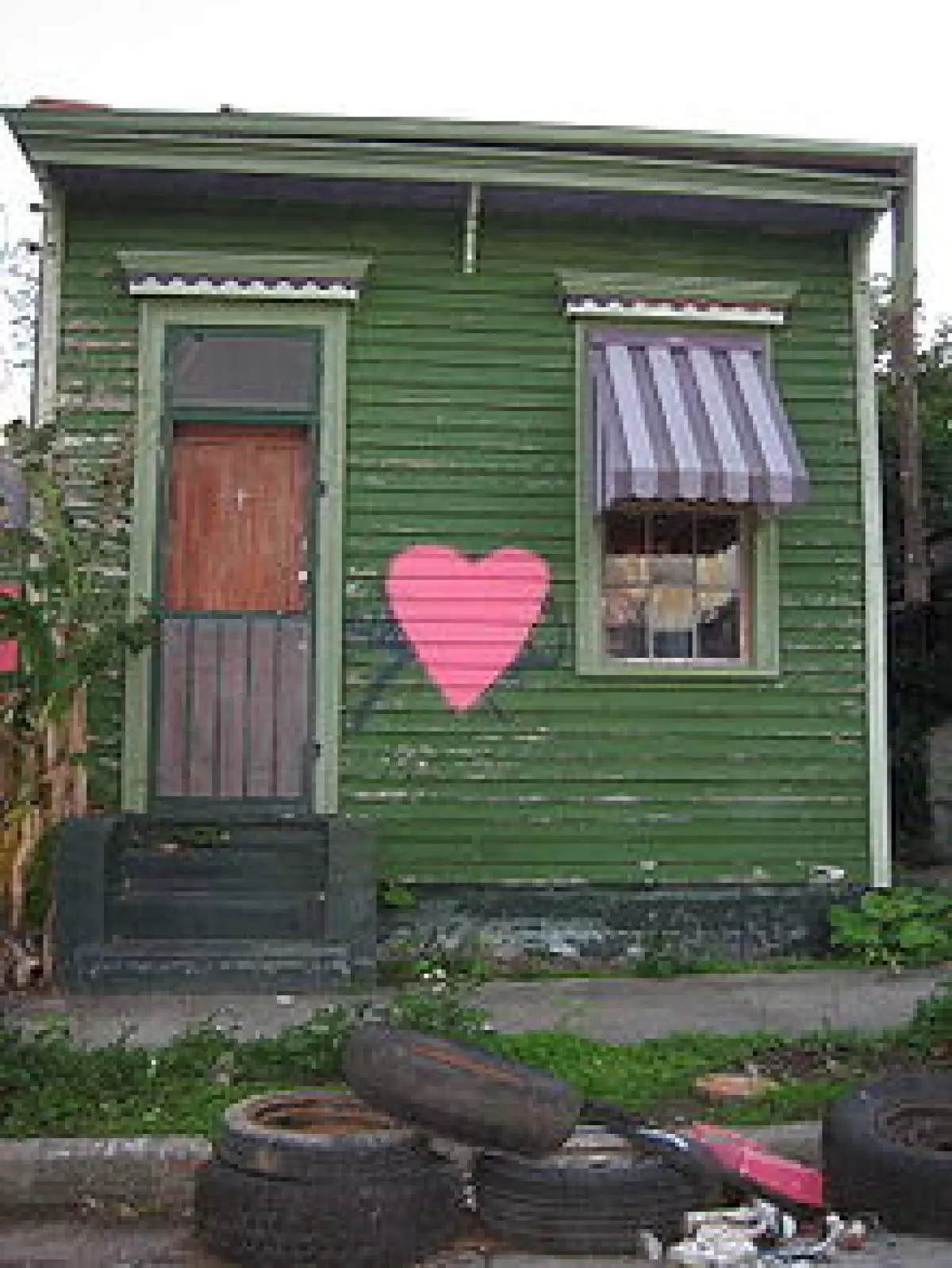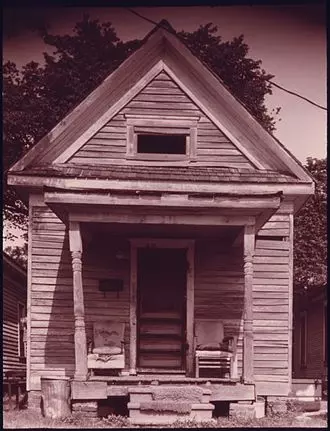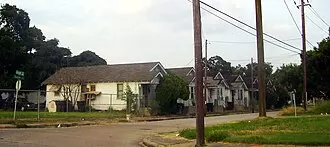 Image: A modest shotgun house in New Orleans's Bayou St. John neighborhood shortly after Hurricane Katrina
Image: A modest shotgun house in New Orleans's Bayou St. John neighborhood shortly after Hurricane Katrina
Shotgun houses, also known as shotgun shacks or shotgun cottages, hold a special place in the architectural history of the Southern United States. These narrow, rectangular homes with rooms arranged one behind the other and doors at each end were the most popular style of housing from the late 1800s to the 1920s. While they may have been associated with poverty in the mid-20th century, today they are being celebrated for their unique charm and historical significance.
Tracing the Origins of Shotgun Houses
 Image: Shotgun house in the Fifth Ward neighborhood of Houston, Texas, 1973, as pictured in a photo by Danny Lyon
Image: Shotgun house in the Fifth Ward neighborhood of Houston, Texas, 1973, as pictured in a photo by Danny Lyon
The history of shotgun houses is as intriguing as their architecture. While there are various theories about their origins, one popular belief is that they can be traced back to Africa and the influences of Saint Dominican house design in New Orleans. However, these unique homes can be found as far north as Chicago and as far south as Key West. Regardless of their origin, shotgun houses have become an integral part of the cultural fabric of many Southern cities.
The Evolution of Shotgun Houses
Over time, shotgun houses have evolved to meet the needs of different generations. The earliest examples lacked indoor plumbing, but this was often added later. Some variations of shotgun houses, such as "double-barrel" or "double" shotgun houses, feature two attached homes sharing a central wall. Others, known as "camelback" shotgun houses, have a second floor at the rear of the house. These adaptations allowed for additional features and space while still preserving the essence of the original design.
Preservation and Revitalization
 Image: Shotgun houses in Louisville, Kentucky. In cities, shotgun houses were built close together for a variety of reasons.
Image: Shotgun houses in Louisville, Kentucky. In cities, shotgun houses were built close together for a variety of reasons.
Unfortunately, many shotgun houses have been lost to urban renewal projects, but in areas affected by gentrification, efforts to preserve and renovate these historic homes have been successful. Thanks to these preservation endeavors, shotgun houses are experiencing a revival. Their unique architecture and historical significance have attracted homeowners who appreciate their charm and want to be part of preserving their legacy.
Characteristics of Shotgun Houses
 Image: A pair of single shotgun houses, dating to the 1920s, in the Campground Historic District of Mobile, Alabama
Image: A pair of single shotgun houses, dating to the 1920s, in the Campground Historic District of Mobile, Alabama
Shotgun houses share some common characteristics that make them instantly recognizable. They are typically narrow, with rooms lined up one after the other. The most common layout includes a living room at the front, followed by one or two bedrooms, and finally a kitchen at the rear. In the earliest examples, bathrooms were not part of the original design, but they were often added later. The rooms are well-sized with high ceilings, allowing for efficient cross-ventilation and a cooler environment.
The Legacy of Shotgun Houses
Shotgun houses have left an indelible mark on American culture. They feature prominently in the folklore and music of the South, symbolizing the vibrant history and spirit of the region. Many famous individuals, such as Elvis Presley and Aaron Neville, have roots in shotgun houses. These homes have also been referenced in popular songs, like Talking Heads' "Once in a Lifetime" and John Mellencamp's "Pink Houses."
Embracing the Shotgun House Revival
Despite the decline of shotgun houses in the 20th century, a limited revival is now underway. Some cities, like Louisville, are even constructing new shotgun houses to meet the demand for affordable housing. The compact design and efficient use of space make shotgun houses a relevant and cost-effective option for modern living.
If you find yourself captivated by the unique charm and historical significance of shotgun houses, consider joining the movement to preserve and revitalize these architectural treasures. They are not just houses; they are a window into the past and an integral part of our cultural heritage.

















